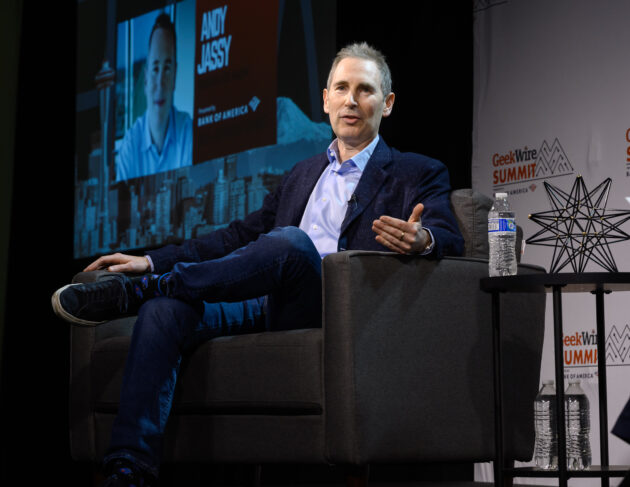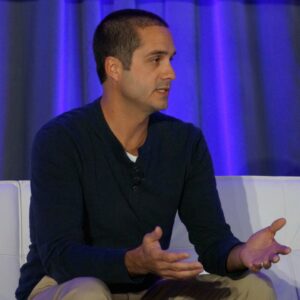
Andy Jassy published his first-ever annual shareholders letter as Amazon’s chief Thursday morning, taking over a tradition long-held by founder Jeff Bezos.
As part of the letter, Jassy addressed employee treatment and warehouse worker safety. “We’ve researched and created a list of what we believe are the top 100 employee experience pain points and are systematically solving them,” Jassy wrote.
We reached out to Amazon for a list of the top pain points, but the company said it is not disclosing that information.
Amazon, which hired more than 300,000 people last year, has been under the microscope for warehouse worker safety and treatment. A recent study found that its workers suffered serious injuries at twice the rate of rival companies last year, CNBC reported, with overall injuries increasing from 2020 to 2021.
Jassy said the company is “passionate about further improving safety in our fulfillment network, with a focus on reducing strains, sprains, falls, and repetitive stress injuries.”
The CEO said Amazon’s injury rates are “sometimes misunderstood.” From the letter:
“We have operations jobs that fit both the “warehousing” and “courier and delivery” categories. In the last U.S. public numbers, our recordable incident rates were a little higher than the average of our warehousing peers (6.4 vs. 5.5), and a little lower than the average of our courier and delivery peers (7.6 vs. 9.1). This makes us about average relative to peers, but we don’t seek to be average. We want to be best in class.
Jassy said he spent “significant” time at fulfillment centers and with the company’s safety team when he first started as CEO, and “hoped there might be a silver bullet that could change the numbers quickly. I didn’t find that,” he wrote.
He noted ongoing initiatives to address the problem, including improved shoes and wearables that prompt employees when they are moving in a dangerous way.
“But, we still have a ways to go, and we’ll approach it like we do other customer experiences—we’ll keep learning, inventing, and iterating until we have more transformational results. We won’t be satisfied until we do,” Jassy wrote.
Jassy stopped short of addressing Amazon’s fight with union-organizing in New York City, where last week a group of the company’s U.S. warehouse workers voted to form a union for the first time in the company’s history. In his letter last year Bezos commented on a separate union effort at a warehouse in Bessemer, Ala.
Jassy’s letter goes a bit longer than Bezos’ write-up last year, which also addressed employee treatment and worker safety issues.
Last year Amazon added two new leadership principles, including “Strive to be Earth’s Best Employer.”
“We’re not close to being done in how we improve the lives of our employees,” Jassy wrote in this year’s letter.
Amazon earlier this year said it was raising the cap for its base pay to $350,000 for corporate and tech employees, up from $160,000 previously, as part of an overall increase in total compensation intended to help recruit top talent and retain existing employees.
Jassy, who replaced Bezos as CEO last summer, also focused in his letter on how Amazon responded to the pandemic and provided some updated metrics related to its sprawling delivery network. At the end of last year the company had 410 fulfillment centers across the globe, with more than 260,000 drivers and 100 Amazon Air cargo aircraft getting packages to customers’ doors.
“We spent Amazon’s first 25 years building a very large fulfillment network, and then had to double it in the last 24 months to meet customer demand,” he wrote.
Jassy also listed out seven components of the company’s approach to “iterative innovation,” which he says is “pervasive across every team at Amazon.” They include:
- Hire the Right Builders — “We think of builders as people who like to invent, who look at customer experiences, dissect what doesn’t work well about them, and seek to reinvent them.”
- Organize Builders into Teams That Are as Separable and Autonomous as Possible — “Single-threaded teams will know their customers’ needs better, spend all their waking work hours inventing for them, and develop context and tempo to keep iterating quickly.”
- Give Teams the Right Tools and Permission to Move Fast — “Speed is disproportionally important to every business at every stage of its evolution. Those that move slower than their competitive peers fall away over time.”
- You Need Blind Faith, But No False Hope — “When you invent, you come up with new ideas that people will reject because they haven’t been done before (that’s where the blind faith comes in), but it’s also important to step back and make sure you have a viable plan that’ll resonate with customers (avoid false hope).”
- Define a Minimum Loveable Product (MLP), and Be Willing to Iterate Fast — “The launch product must be good enough that you believe it’ll be loved from the get-go … but in newer market segments, teams are often better off getting this MLP to customers and iterating quickly thereafter.”
- Adopt a Long-term Orientation — “We know that transformational invention takes multiple years, and if you’re making big bets that you believe could substantially change customer experience (and your company), you have to be in it for the long-haul or you’ll give up too quickly.”
- Brace Yourself for Failure — “When it’s clear that we’ve launched something that won’t work, we make sure we’ve learned from what didn’t go well, and secure great landing places for team members who delivered well — or your best people will hesitate to work on new initiatives.”
The CEO also touched on AWS; devices; Prime Video; the company’s carbon footprint; its affordable housing efforts; and its low Earth orbit satellite network Project Kuiper.
Jassy spoke with CNBC Thursday and talked about crypto, saying he does not own bitcoin and that Amazon could one day sell NFTs.
Read the 2021 letter in full here.





